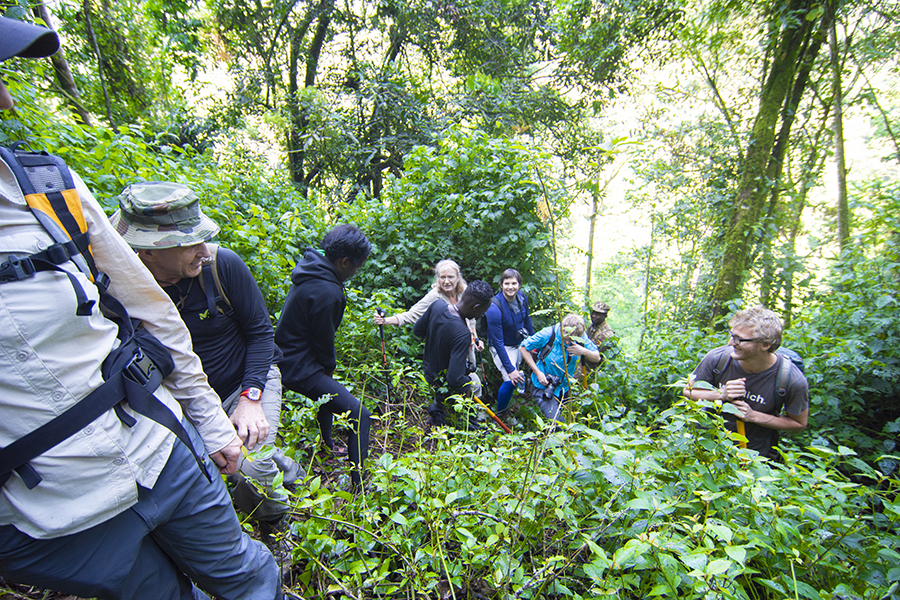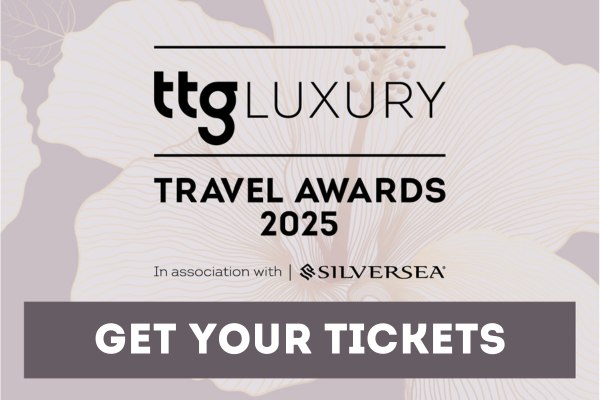How animal lovers can do good for Uganda by booking a gorilla trek
Thirty years since gorilla tourism first took place in Uganda, the model is working, with funds generated by the bucket-list experience contributing directly towards conservation efforts, community development, and the overall preservation of Uganda’s natural resources. We take a look at the destination’s success story.

No mountain gorilla has ever survived in captivity. They thrive and flourish as a community when they are able to remain in their natural habitat. Gorilla trekking allows travellers to get up close and personal with these captivating primates while making sure their environment is protected and free from a constant human presence.
Mountain gorillas specifically can only be found in Uganda, Rwanda and Democratic Republic of Congo (which is not really a safe option for tours). Half of their population live in Uganda, where they have helped boost the tourism industry as well as prospering in their natural habitat, a fantastic achievement to dwell on as the 30th anniversary of gorilla trekking is celebrated in the East African country.
In 1991, Bwindi Impenetrable National Park (don’t worry, it can actually be penetrated) was established and became home to a family of mountain gorillas. Local residents were relocated to the surrounding area to make sure the gorillas would not be disturbed by humans. They were, however, exposed to people just enough that they would not be aggressive or nervous when travel groups came to observe the animals. The first family to live in Bwindi were nicknamed Mubare, and two of the female gorillas from this troop are still part of the group 30 years on.
Dr Gladys Kalema-Zikusoka was the first ever vet employed by the Uganda Wildlife Authority, and she has been instrumental in efforts to protect the gorillas. She founded Conservation Through Public Health, a non-profit organisation that promotes conservation by improving the quality of life of people and wildlife, enabling them to co-exist in and around protected areas of Africa.
She reflects on the early pioneering days: “Gorilla trekking 30 years ago was very exciting. Tourism had just begun and there was a contagious air of hope that people would be lifted out of poverty. At the time there were only two gorilla groups habituated for tourism and one for research. I went there as a veterinary student in 1994 comparing parasites and bacteria in gorillas visited by tourists and researchers.
"There were only about five lodges to stay in at the time; there was more camping and overland trucks in Bwindi. There were very few tourists, only a maximum of 12 per day. With no advanced tracking team, it took much longer to find the gorillas. The rangers had to rely on walkie talkie radios to communicate with each other because there were no mobile phones.
"The experience felt even more special because the gorillas were harder to find. You had to first begin from where the gorillas were left behind the previous night, locate their night nests and then follow the trails they left behind to find where they were, so everyone became a gorilla tracker!”
In addition to Bwindi Impenetrable National Park, Uganda’s Mgahinga Gorilla National Park, smaller in size, is also now a protected area for mountain gorillas. Treks involve hiking through dense forests, crossing streams and rugged terrain to reach the gorillas, with the best conditions offered from December to February and between June and August.
Tourists are able to purchase permits to hike through these luscious green spaces and watch the animals, but must move on after one hour to maintain the primates’ privacy and freedom. Gorillas share just over 98% of their genetic code with humans, and their complex relationships are fascinating to observe.
Since Bwindi and Mgahinga started protecting the mountain gorilla population, their numbers have thankfully grown. In 1993, it was recorded that 270 individual mountain gorillas lived in Uganda. At the last census in 2018, there were 470 and it is estimated that the next five-yearly census will show there are more than 500 individuals living in the country. Mountain gorillas are still an endangered species, but no longer critically so, and the future looks hopeful.
Gorilla treks allow humans to observe these beautiful creatures, as well as preserving their environment for future generations. "We invite everyone to join us in celebrating this 30-year milestone and to experience the beauty and wonder of Uganda’s gorillas for themselves," said Lilly Ajarova, chief executive of Uganda Tourism Board. "By visiting Uganda and supporting our gorilla tourism industry, you are not only helping to conserve these magnificent creatures, but also helping to build a brighter and more sustainable future for our country."
Below, we have picked out some of the most exciting gorilla treks on offer to clients with a variety of options, serving the most time-pressed to more devoted naturalists.
A shorter trip
Intrepid offers a short-but-sweet trekking tour. The journey begins in Lake Mburo National Park, the best area in the country to spot animals such as zebras, buffalo and leopards. Next, Bwindi Impenetrable Forest allows travellers to trek through beautiful scenery and see mountain gorillas in their natural habitat.
Book it: Intrepid offers a four-day Gorilla Short Break tour from £2,213pp, flights to Kampala extra; intrepid.com
More wildlife viewing
With Abercrombie & Kent, your clients can trek through Bwindi Impenetrable Forest to see the gorillas, as well as experiencing the Great Migration in Kenya’s Masai Mara. A hot-air balloon ride offers a thrilling chance to spot the Big Five.
Book it: Abercrombie and Kent offers an eight-day tailor-made Uganda Gorilla Trek and Kenya’s Great Migration itinerary from £8,170pp, flights included; abercrombiekent.co.uk
A tour endorsed by Jane Goodall
G Adventures includes a Kampala to Kigali tour in the Jane Goodall Collection, a wildlife tour endorsed by the world-renowned primatologist in line with her mission to protect wildlife and empower local communities. As well as a traditional lunch with the Bigodi community, the tour opens travellers’ eyes to recent atrocities in Rwanda with a visit to the genocide museum.
Book it: G Adventures offers the eight-day Uganda to Rwanda: Gorilla Treks and Safari Drives tour, from £2,849pp, with flights extra.
A way to take the children
Although children under 15 years old cannot participate in gorilla trekking, family specialist Coral Tree offers a luxury experience to suit the whole family. Alternative activities/childcare can be arranged for younger explorers while older family members see the gorillas in Bwindi. The family then continues to the Maasai Mara for a classic safari experience with cultural visits also woven into the itinerary.
Book it: Coral Tree offers an eight-day Luxury Gorillas and Maasai Mara safari tour, from £5,480pp, flights not included; coraltreetravel.com
See chimpanzees too
Gorillas are not the only primates that can be spotted in Uganda. In addition to seeing the mountain gorillas, Explore’s Gorilla and Chimp Safari tracks chimpanzees in Kibale National Park, which is home to another 13 species of primate including the Ugandan red colobus. The tour continues in Queen Elizabeth National Park scouting for lion, elephant and buffalo and a Zanzibar extension can be added.
For clients with a little more budget to play with, Audley Travel also allows clients to see chimps alongside the gorillas with its itinerary covering Bwindi, Kibale and the Bigodi Wetlands.
Book it: Explore offers the 11-day Uganda Gorilla and Chimp Safari tour, from £4,795pp, flights not included; explore.co.uk; Audley Travel offers the 10-day Uganda Primate Explorer Tour, from £8,210pp, flights included.
Gorilla fast facts
1. Mountain gorillas live in family groups headed by one or more silverback males, with several females and young. Both males and females care for the infants in their group.
2. They spend about a quarter of their day eating, mainly herbaceous vegetation such as leaves, nettles, thistles, and bamboo shoots, but they can eat larvae, snails, ants and rotting wood (a good source of sodium/salt).
3. They have 16 different types of call including short barks when they’re alarmed or mildly curious. To intimidate rivals, male gorillas strut with stiff legs, beat their chests and roar.
4. Babies are born when a female reaches 9-12 years and will be weaned at 3-4 years meaning a female can only give birth every 4+ years. They can live to over 40 years old in the wild.
5. Males are often pushed out of the group when they reach adulthood and develop the silver back (around 12 years) becoming lone males until they can take over a group of females when a group male is too old to defend it or dies.
















